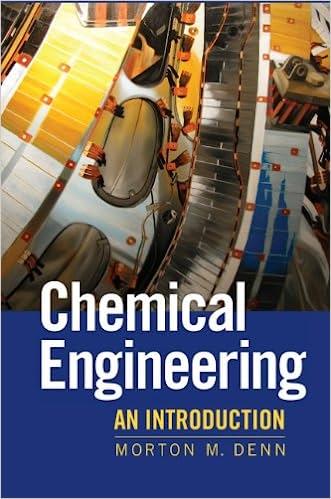Question
4.1. Ultimate analysis of a combined organic waste containing food waste and yard waste has determined an elemental composition of C16H24O5N4. Estimate the lower heating
4.1. Ultimate analysis of a combined organic waste containing food waste and yard waste has determined an elemental composition of C16H24O5N4. Estimate the lower heating value per kg of this waste using equation: = 144 + 672 + 6.2 + 41.4 10.8 .
Where LHV = lower heating value (btu/lb)
C = weight percentage of carbon (value between 0 and 100), dry basis
H = weight percentage of hydrogen (value between 0 and 100), dry basis
O = weight percentage of oxygen (value between 0 and 100), dry basis
S = weight percentage of sulfur (value between 0 and 100), dry basis
N = weight percentage of nitrogen (value between 0 and 100), dry basis. (Note that the molecular mass you calculate will be on a dry basis, the WHOLE percentage must be used (e.g., 50% = 50 NOT 0.5). 4.2. Estimate the amount of air required to completely oxidize this material (See Problem 4.1). Assume that nitrogen is converted to N2 (nitrogen gas). Provide your answer as kg of air per kg of dry waste. If the air is provided at a total pressure of 2 atm and a temperature of 20 deg C, what volumetric air flow rate is needed?
4.3. A facility will produce this waste stream (see Problem 4.2) at a rate of 3,000 kg/hr and is considering using an incinerator for energy recovery. The water content of the waste is 10% on a mass basis and the waste stream contains 2.5% inert material on a mass basis. Water is vaporized in the incinerator and the heat of water vaporization is 2,600 kJ/kg. Incomplete combustion results in 8% of the organic waste being converted to ash. Air is provided to the incinerator based on a stoichiometric basis (based on your answer to Problem 4.2). In total, 3% of the heat generated in the incinerator is lost as radiant heat. The temperature of the ash leaving the incinerator is 600 deg C and the specific heat of ash is 0.7 kJ kg-1 C-1. You may assume that the influent air does not contribute any heat. Estimate the heat that would leave the incinerator in the stack gas and estimate the mass flow rate of stack gas produced (kg/hr).
Step by Step Solution
There are 3 Steps involved in it
Step: 1

Get Instant Access to Expert-Tailored Solutions
See step-by-step solutions with expert insights and AI powered tools for academic success
Step: 2

Step: 3

Ace Your Homework with AI
Get the answers you need in no time with our AI-driven, step-by-step assistance
Get Started


